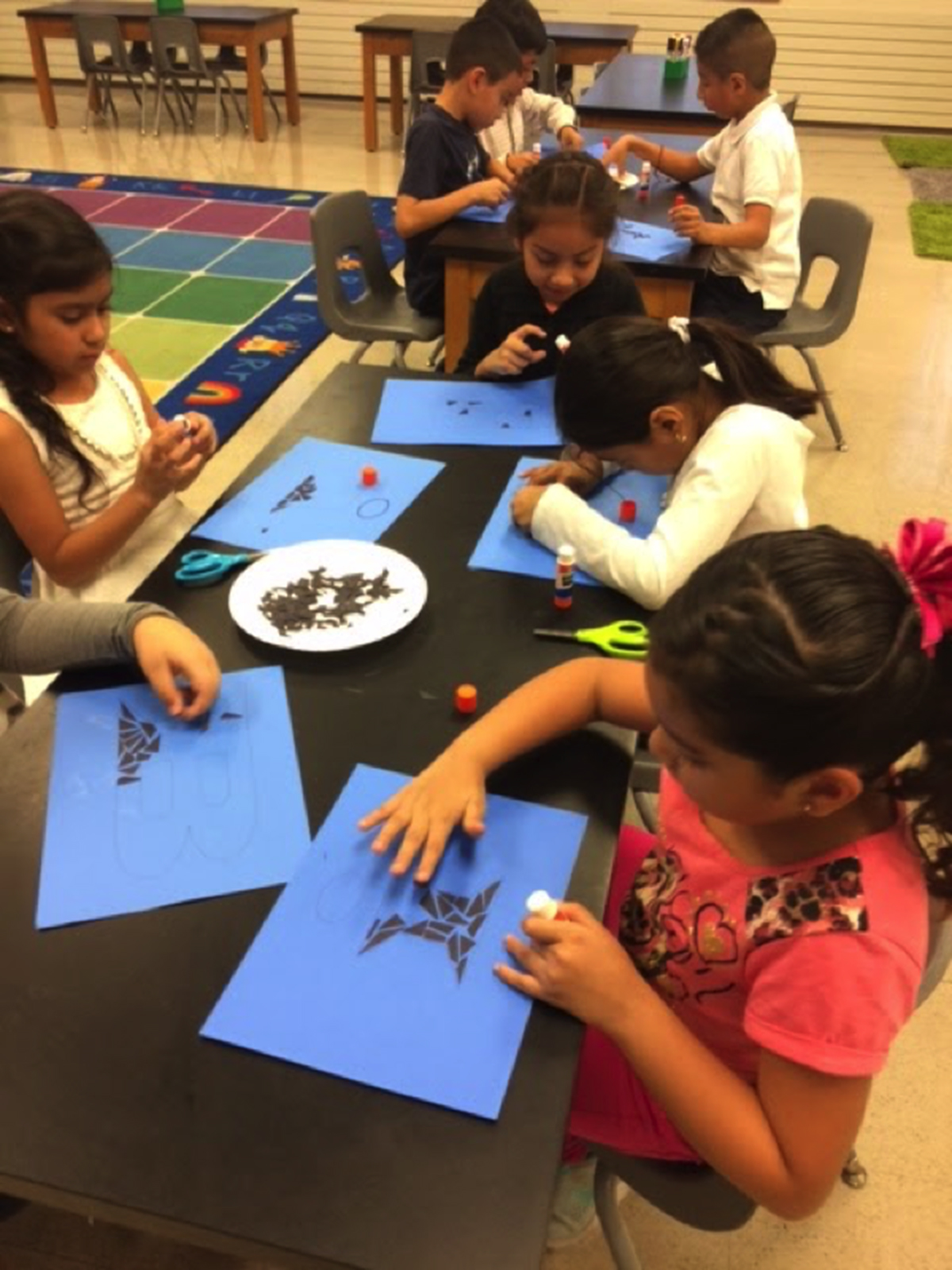Welcoming the Power of Art
By Amy Castaneda
Schools and communities often contain neglected spaces that can make children feel less than welcome. How can we use the power of art and collaboration to transform these spaces together? Second graders looked at examples of contemporary art, and used unstructured studio exploration time and dialogue to reveal that transforming a neglected space in their school required bringing in the beauty of nature through the theme of “seasons.” Noticing the way that their school faces the larger neighborhood, students worked together to design the message they determined is most needed: “Welcome,” and “Bienvenidos.” The teacher invited local professional mosaic artists to realize the student-artists’ original design, and to share skills for socially-engaged project development.
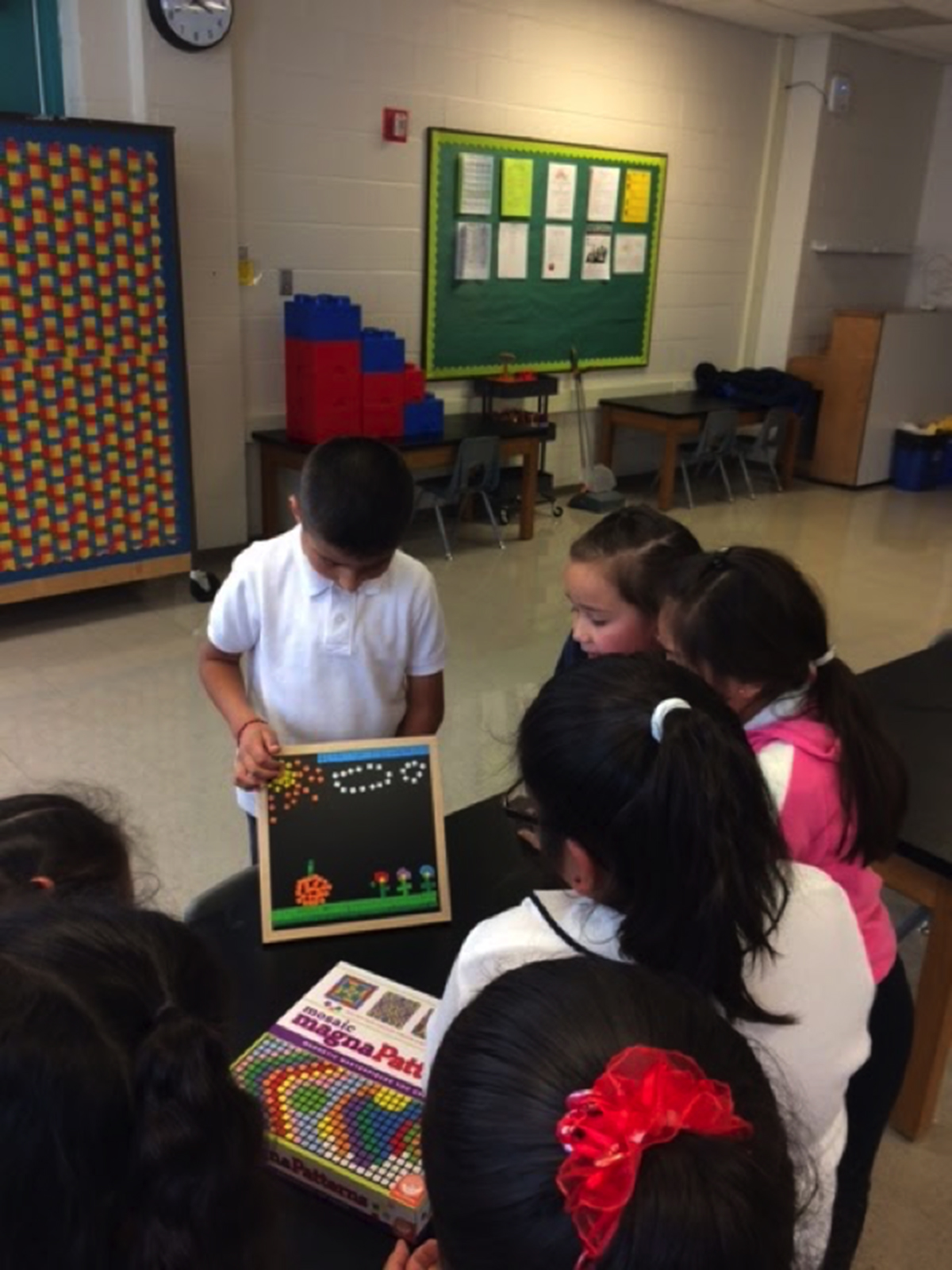
Goals and Objectives
- Students will create a design that welcomes community members to their space.
- Student will learns skills for working together as a team, both through supportive classroom dialogue and through collaborating with local professional artists who engage in teamwork.
- Students will reflect on the transformation they created.
Guiding Questions
- What makes art powerful?
- What types of transformations do you hope to see around you?
- How can art improve neglected spaces and include the community?
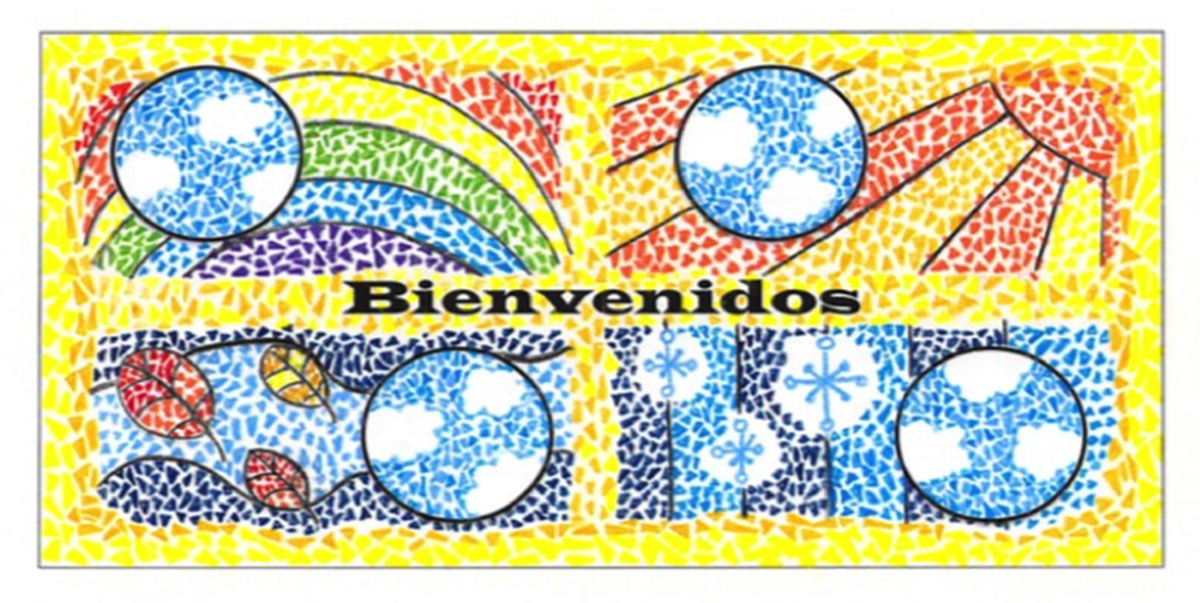
Documentation + Assessment
- Students used photography to document the process.
- Students used sketching to document the process.
- Students presented the work to the community.
- Students presented a workshop / exhibit to answer questions.
Learning Activities
Step 1
Introduce Contemporary Art
Project slides of paintings by Chicago contemporary artist, Kerry James Marshall, from the exhibit Mastry at the MCA. Invite students to notice the qualities of the Chicago scenes, and identify qualities of contemporary art.
Step 2
Field Trip to the Museum of Contemporary Art
Building on the in-class conversation in Step 1, engage students in critical dialogue about the original paintings on view in the Kerry James Marshall exhibit,Mastry. Invite students to discuss the key terms of community, welcoming, growth, and transformation.
Step 3
Introducing Socially Engaged Art
Show students examples of work by Chicago contemporary artist Andres Hernandez. Engage students in critical dialogue about the ways artists can change spaces and places for people.
Step 4
Developing Community Inquiry
Ask students to engage with the guiding question: What makes art powerful? From here, collectively identify other questions that matter to our classroom community.
Step 5
Explore the Neighborhood
Lead students on a guided exploration of the neighborhood around their school. Invite them to notice what is beautiful and what is neglected. Ask students: What could we do to improve our community?
Step 6
Transforming Neglected Art into Powerful Art
Following student interest in a neglected mural, focus class attention on developing a strategy for using studio materials to transform the mural into a community mosaic. Students can begin critical dialogue about how a new mural might reflect the community and enhance their playspace.
Step 7
Playing with Materials for Thematic and Schematic Plans
Offer studio materials such as magnetic mosaic tiles, cut-paper collage, and other small-scale sketching material to play with ideas. As they work in the studio, note the themes and messages that emerge.
Step 8
Designing the Mosaic
Lead students in creating a scaled paper model around issues of improving space, depicting the four seasons and centering around the word “Bienvenidos,” meaning “Welcome.”
Step 9
Installing the Mosaic with Local Professionals
Invite professional mosaic artists to work with students to implement their plan in ceramic tiles. Students can assist the professional artists and learn skills of cutting, adhering, and grouting the colorful pieces. Alternatively, parents in the community might have similar skills to share.
Step 10
Plan the community unveiling
Ask students to collaborate and invite the school community and neighborhood to celebrate the unveiling of the mural they have designed. At the party, delegates from the collective should speak about the power of art and the process of this project. Students should display their original sketches and models in the classroom as a secondary gallery for community members to see the process behind-the-scenes and allow for more conversation about socially-engaged art.
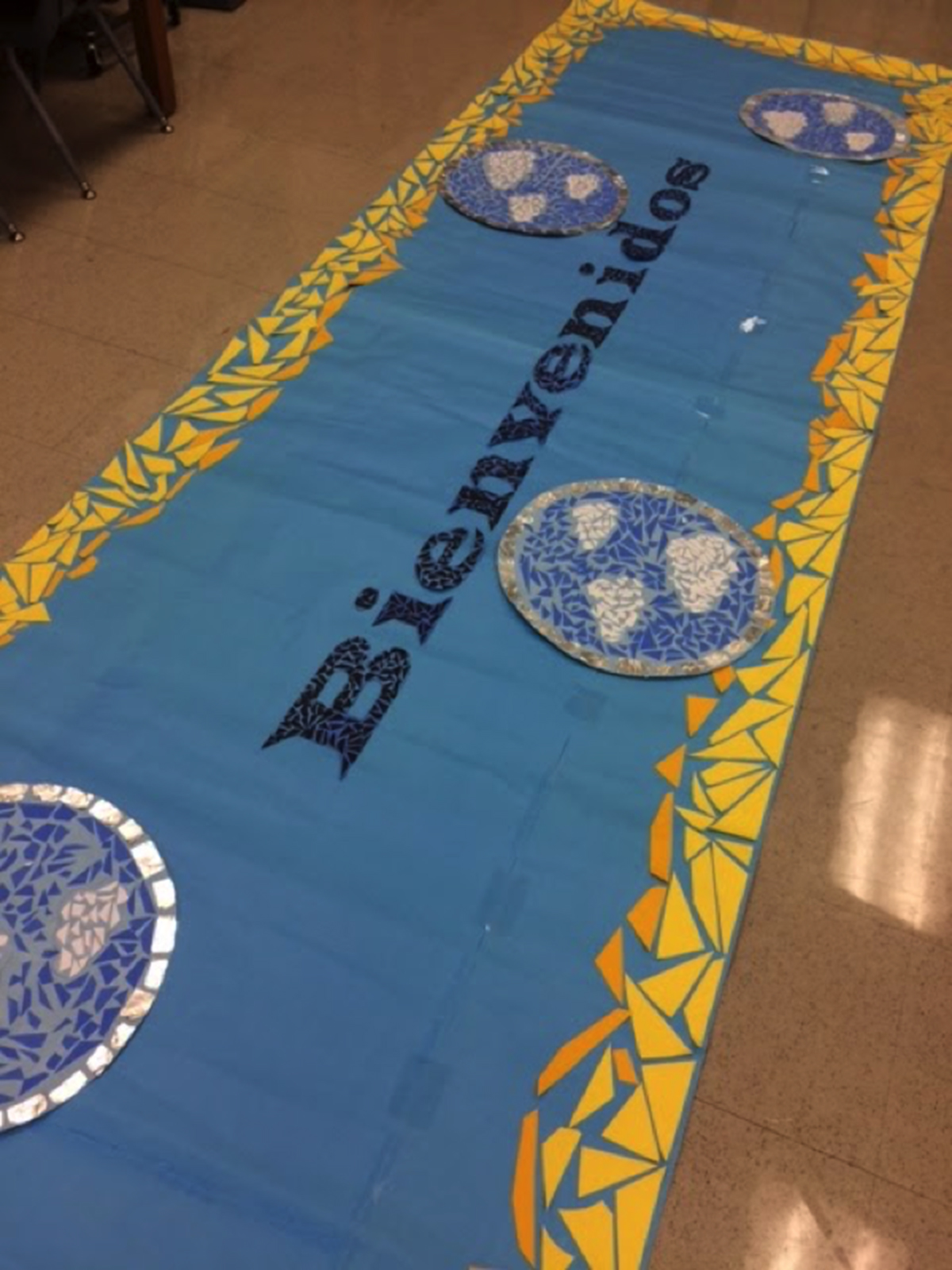
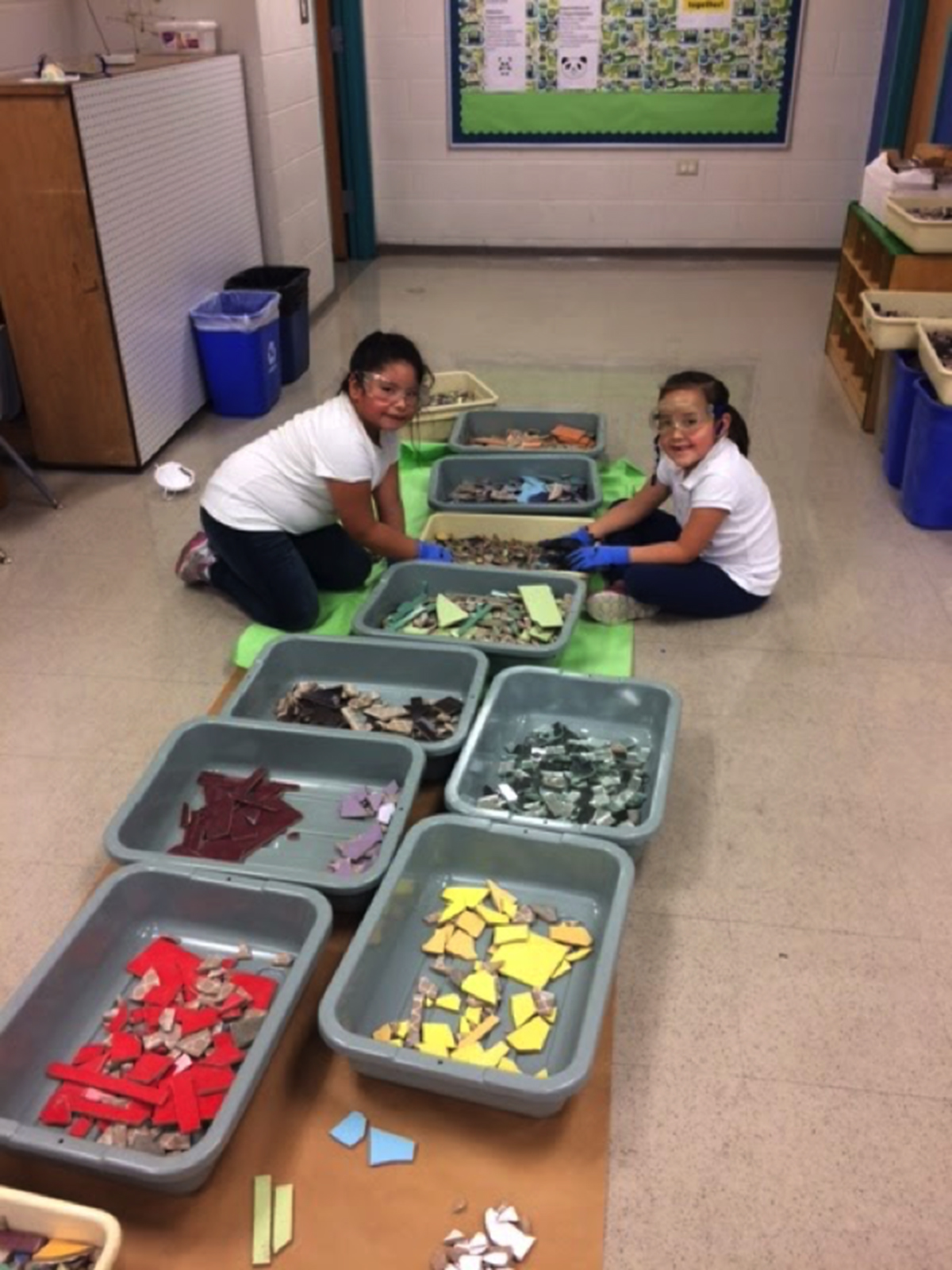
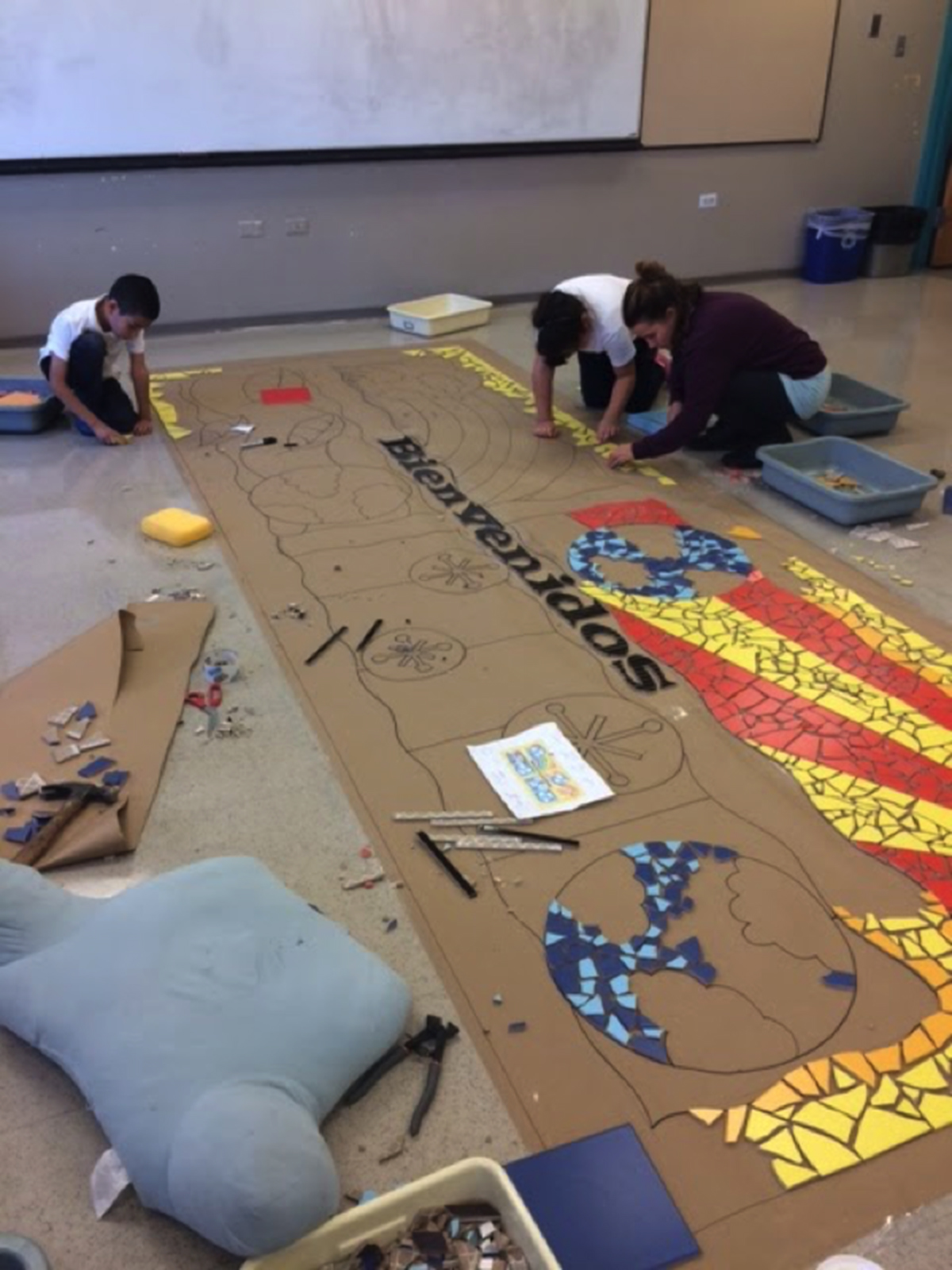
Materials
Sketching materials: loose paper, pencils, and other mark-making tools for initial ideas
Collaging materials, including both paper and magnetic mosaic pieces
Colored mosaic pieces, mosaic adhesives, and grout
Large paper for drawing the mosaic schematic
Rulers
MCA Connections
Students visited the Kerry James Marshall exhibition, Mastry. Students prepared for the field trip by looking at works from the exhibit and developing questions. With their guiding questions in mind, students arrived at the museum full of curiosity and excitement. The group was divided into three smaller groups who were each assigned a museum tour guide. The students looked at Mastry and were challenged to think about the deeper meanings of each work. Students were able to build on their prior knowledge, share their original questions, and develop new questions.
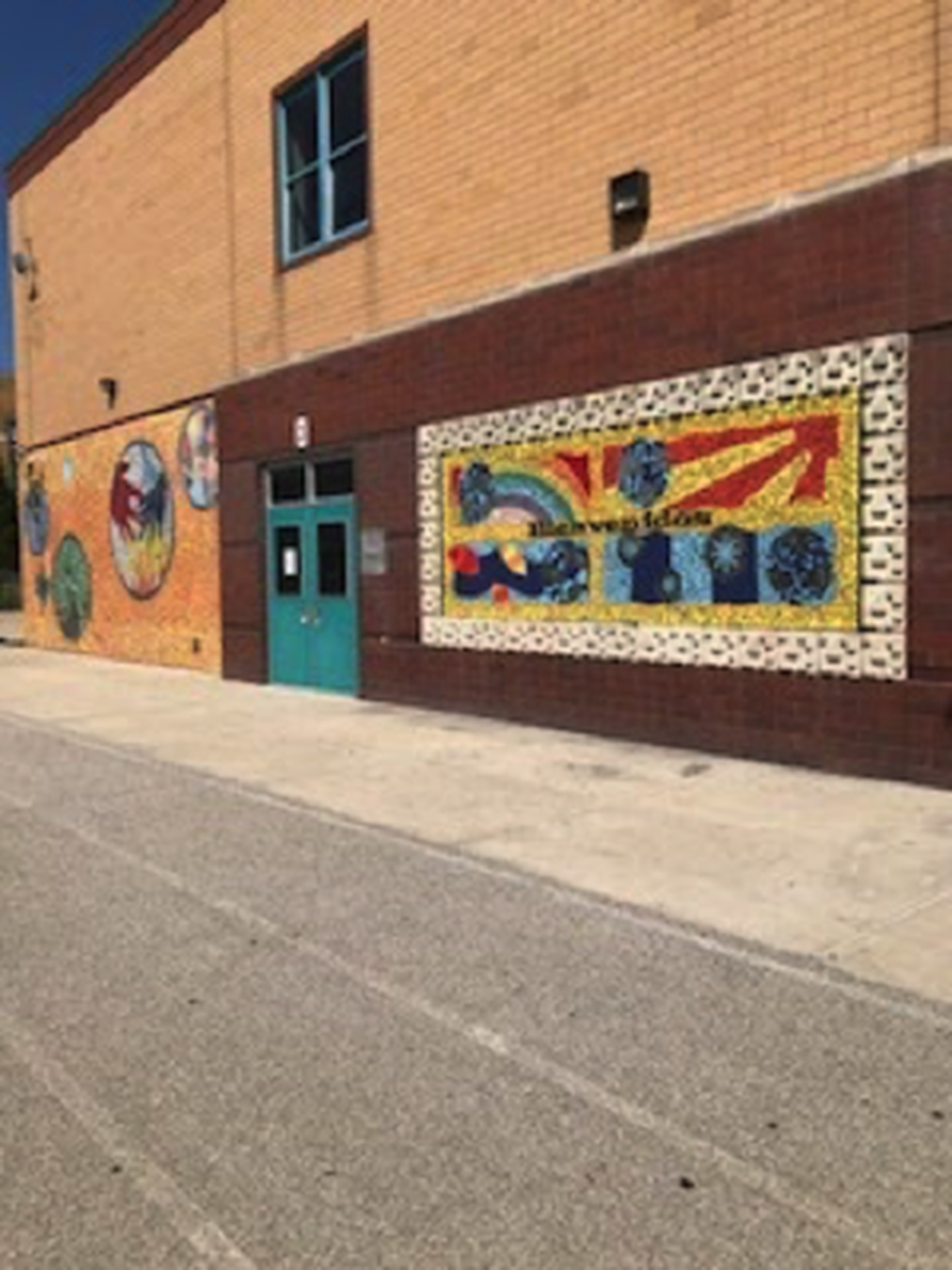
References + Resources
Amy Castaneda
Josefa Ortiz de Dominguez Elementary School
Amy Castaneda is an art educator at Josefa Ortiz de Dominguez Elementary School, a Chicago Public School located in the Little Village community. She is the co-founder of Beyond the Ball, a grassroots non-profit that uses sport and play for community development. In 2010, Beyond the Ball received a global Beyond Sport “Most Courageous Use of Sport Award,” for Project Play, a program she designed to reclaim public play spaces in the community. In 2011, she received the “Norm Bobbins Emerging Leadership Award,” at the Chicago Community Development Awards for her neighborhood leadership in youth development and community building through sport. She is a PhD candidate at the University of Illinois at Chicago and her research explores the power of play to transform community spaces. She recently co-authored an article for the Journal of Physical Education, Recreation & Dance entitled “Sport-based Youth and Community Development: Beyond the Ball in Chicago” for the May 2016 issue.
